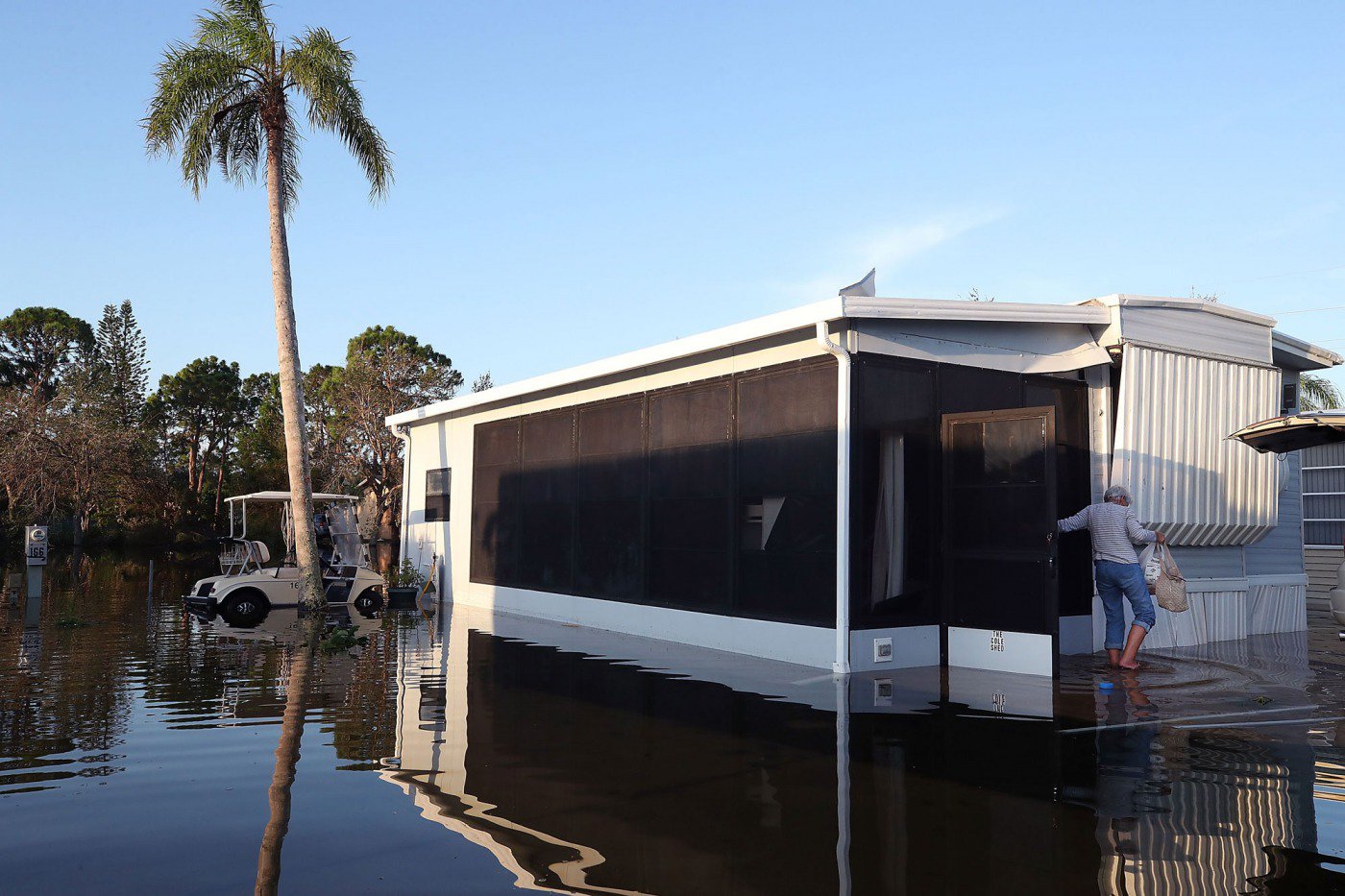Understanding how homeowners think about flood insurance can help lawmakers consider reforms to the National Flood Insurance Program aimed at protecting the most vulnerable populations.

Of the five of the most damaging natural disasters on record in the United States, three occurred in 2017: Hurricanes Harvey, Maria, and Irma. These events cost$125 billion, $90 billion, and $50 billion, respectively. Meanwhile, members of Congress have deliberated various options to reform the National Flood Insurance Program (NFIP), which has been operating on short-term extensions and is currently up for reauthorization in July of this year. Program administrators at the Federal Emergency Management Agency (FEMA) note that “the level of damage from the 2017 hurricanes makes it abundantly clear that FEMA needs a holistic plan to ready the Nation for managing the cost of catastrophic flooding under the NFIP.” At present, the most recent bill to pass in the House of Representatives included a provision requiring FEMA to provide financial assistance to support low-income homeowners in purchasing flood insurance policies under the NFIP. Experts have suggested that vouchers to help offset the cost of insurance premiums or reimbursements for deductibles could help lower-income families cope with the financial burden of flood insurance.
Poorer households who most need flood insurance to buffer them in the event of a natural disaster are most inclined to lower coverage when the price increases.
Authors
Understanding how homeowners in different income groups think about flood insurance can help lawmakers craft more effective policy design for NFIP reforms. To help shed light on the issue, in a new study of flood insurance demand (with Carolyn Kousky, an RFF university fellow and director of policy research and engagement at the Wharton Risk Center), we’re identifying differences in attitudes about insurance across varying income groups in the United States. Specifically, using an NFIP dataset of about 100,000 insurance policies, we estimate how homeowners with different income levels respond to changes in the cost of flood insurance. [Ed. note: Study forthcoming. This article will be updated with a link when it becomes available.]
In brief, our results indicate that lower-income homeowners are more sensitive to the cost of insurance than higher earners. Low-income households are more likely to reduce flood insurance coverage if policy prices increase—and increase coverage if the costs are reduced. These findings highlight a troubling contradiction: poorer households who most need flood insurance to buffer them in the event of a natural disaster are most inclined to lower coverage when the price increases.

A resident of Bonita Springs, Florida, removes belongings from her home after Hurricane Irma hit in September 2017. The storm caused widespread flooding and power outages along Florida’s western coast
We estimate insurance demand by observing patterns in homeowners’ choices among various insurance deductible amounts. This is a novel approach to estimating demand, designed to overcome the difficulty brought on by the fact that many residents in floodplains across the nation are required to buy insurance policies by mortgage lenders. Although homeowners often purchase policies only to satisfy insurance mandates tied to federally backed mortgages, buyers have full discretion to choose among different deductible amounts. Choosing a lower deductible is equivalent to buying more coverage at the cost of paying a higher premium. Suppose a homeowner is faced with two alternatives: (A) paying a $500 annual flood insurance premium for a policy with a $5,000 deductible; or (B) paying an annual premium of $550, with a $4,000 deductible. Option (B) offers up to an additional $1,000 of coverage (in other words, the homeowner pays $1,000 less for home repairs in the event of a flood that causes more than $5,000 of damage), though the annual premium costs an extra $50. To put it another way, the policyholder must pay $0.05 extra per dollar of coverage offered with the lower deductible. A number of factors contribute to differences in the amount a given homeowner must pay per-dollar of deductible coverage. By observing the relationship between the cost of lower deductibles and the deductibles that households choose, we can map out the demand curve for insurance coverage.
Our sample includes all residents of the 100-year floodplain (regions that face the greatest flood risk, based on FEMA’s assessments and maps) who purchased a flood insurance policy in the second half of 2014. (See the interactive map below for a depiction of the geographic distribution of these policyholders.) The results of our research show that the average homeowner is 6 percent less likely to choose a policy with a low deductible given a $0.01 increase in the cost per dollar of coverage. After applying a little algebra and economic theory, we estimate that the average policyholder is willing to pay up to $0.07 for each dollar of deductible coverage.
So where does wealth fit into the picture? And how does homeowners’ willingness-to-pay for flood insurance vary across different income groups? We approximate wealth based on the replacement value of a policyholder’s home (the amount it would cost to rebuild the home) and measure income by the median income of the census tract where the home is located. We then apply the same estimation as described above to policyholders falling into different subsets of the wealth and income distributions. Our analysis shows that policyholders with higher-value homes and greater incomes are generally less sensitive to increases in the cost of coverage. Among policyholders with home values in the range of $60,000 to $153,000, for example, a $0.01 increase in the cost per dollar of coverage reduces take-up of the policy with the low deductible by 9 to 10 percent. By contrast, for policyholders with home values of $293,000 or above, the same $0.01 increase reduces take-up by only 5 to 6 percent.
Figures 1 and 2 help illustrate these by depicting homeowners’ willingness-to-pay for flood insurance based on our estimates. Homeowners residing in areas with median incomes in the bottom three groups are willing to pay up to $0.05–$0.06 per dollar of insurance; those living in areas with incomes in the top three groups are willing to pay roughly $0.07–$0.08 per dollar. For example, our results suggest that a typical homeowner in the top income group would be willing to pay up to $80 in additional annual premiums for a $1,000 reduction in his or her deductible, whereas a homeowner in the bottom group would be willing to pay no more than $50 for the same coverage. We see a similar pattern emerge as mentioned above when comparing insurance demand across home values, confirming that increases in income or wealth can produce a nearly two-fold increase in what homeowners are willing to pay for flood insurance.
In contrast to our findings, traditional economic theories predict that demand for insurance declines with increases in wealth—in large part because the alternative of “self-insuring” against future losses becomes more feasible as households accumulate more wealth. Wealthier households that experience floods are better equipped to pay for home repairs using existing assets or savings. Prior research also suggests that low-income residents of disaster areas have more limited access to low-interest loans. These observations indicate that lower-income homeowners should, in fact, be more willing to buy insurance—though the data show that they are less willing.
Why do low-income homeowners choose to purchase less flood insurance than wealthier households? The reasons are somewhat a matter of speculation. For these buyers, the opportunity costs associated with spending hard-earned income to purchase insurance can present more immediate obstacles—paying for extra coverage might mean that families must forego important car repairs or other needed expenditures, for example. Another possibility is that consumers lump spending into different “mental accounts” (as Nobel Laureate Richard Thaler first suggested in 1985) and become less sensitive to increases in expenditures as the size of the account grows larger. For instance, wealthy homeowners are likely to already pay several times more for housing-related expenditures (in property taxes and mortgage payments, for starters) than their lower-income counterparts, and so they may be less averse to spending extra when it comes to buying insurance.
In any case, the patterns we see in household demand for flood insurance in the United States tell us at least one thing: increases in the cost of insurance will disproportionately impact coverage levels among lower-income homeowners. In addition to reducing financial hardship, subsidies that target low-income households with discounts for insurance premiums could prevent reductions in coverage in the face of rising premiums among policyholders who are most willing to forego flood insurance when costs are high.







